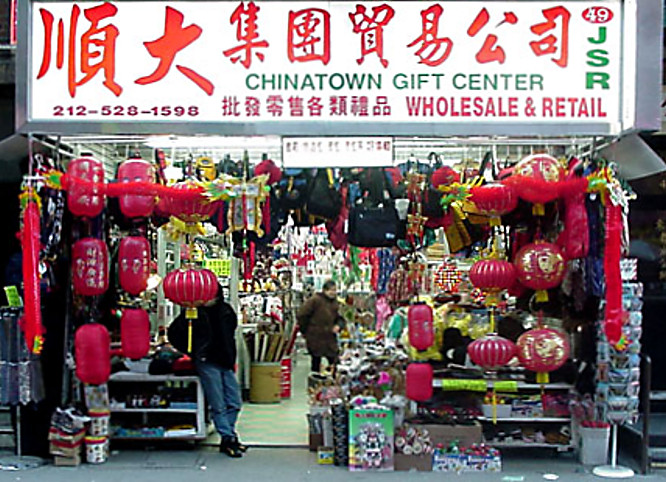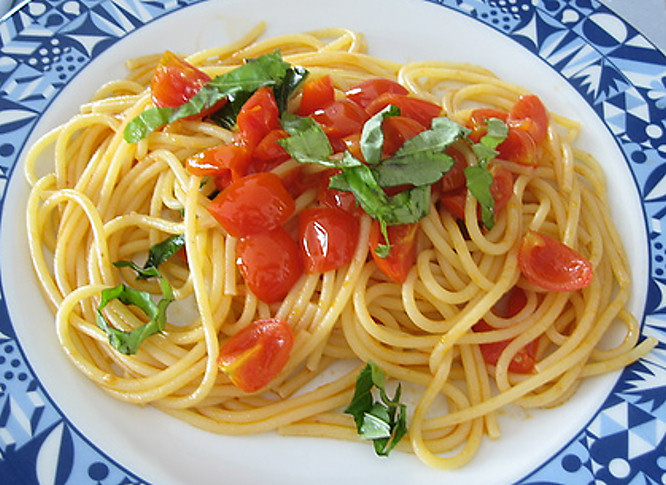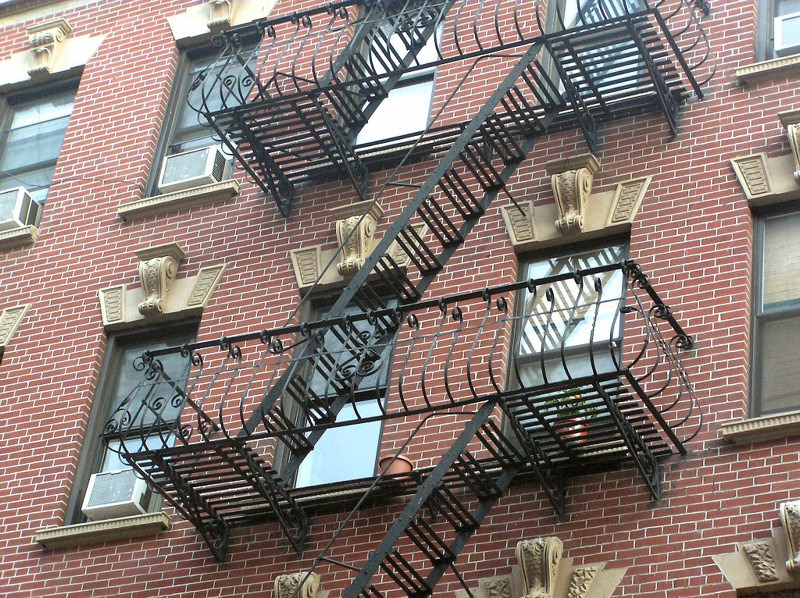China Town, SoHo and Little Italy
From Battery Park now walk back through the park to Bowling Green Subway Station. Take the 6 train uptown (signed Pelham Bay Park). Get off at Canal St Station. Walk east down canal street six blocks. Turn right down Mott Street. You are now in China town. Walk for three blocks until you hit Worth Street. Turn right. Take the next right called Mulberry Street and keep walking north. As you pass Canal Street again China Town will start to become Little Italy.

New York's China Town
New York City's Chinatown is very disappointing. It is not as attractive as other American city China Towns. San Francisco's China town and London's China town is much better. A food tip: step into one of the many Chinese delis and ask for sticky sweet rice cakes. They are white, cut in squares, soft, and gooey. Bargains on clothing and leather are plentiful. The Canal Street (J, M, Z, N, R, 6, Q, W) station will get you to the heart of the action.
Go down Canal Street, Mott Street, Bowery Street, Mulberry Street. Make sure you haggle just like you would if you were in a Hong Kong market. Work out how much you want to pay. Suggest a price 30 percent cheaper and then haggle up to your price. If the shop keeper still doesn't want to sell for that price then use the walk away trick. If he doesn't come after you and agree to sell it at your price then it was too expensive. Do not try comparing shop prices and then go back to the shop that gave you the best haggle price. They know they were the cheaper price and try to up the price. When you get the price you want, buy it.
New York's Little Italy
North of Canal Street is Little Italy. There are some good Italian restaurants but the area is very disappointing. There are a few Italian flags flying and some of the parking meters are painted in the Italian flag colours. You can go on Mafia themed walks where they point out who was killed where and by who. To the south is China Town. Mulberry St is the main strip from Spring Street to Canal Street. When you hit the junction with Spring Street turn left and walk 5 blocks. Turn right up Greene Street. You are now in SoHo.

New York's SoHo District
Located right next door to Greenwich Village is SoHo, the Manhattan neighborhood SOuth of HOuston St, has the world's largest collection of cast-iron facades. This construction technique not only reduced cost but allowed for ornate features to be prefabricated in foundries from moulds and used as building facades. Have a look at the shops and you will notice that they are very open plan without columns or walls supporting the roof. This is was one of the first places this construction technique was used.

SoHo is on the site of the first free black community on the Island. This area was settled in 1664 by former slaves who were granted land for farms. During the 19th century SoHo became an industrial area with many cast-iron commercial and warehouse buildings. Soho was threatened with demolition in the 1960s until the cast-iron buildings were saved by artist who begun to move into these lofts as the rents were low. In the 60s, painters and sculptors were attracted by the lofts or old warehouses with huge spaces The area became very trendy. Rents went up. Exclusive art galleries opened soon, followed by restaurants and shops.
Some of the best cast-iron buildings can be found on Greene Street. Also a famous sight in Soho are the fire stairs outside the houses (although you can find them also in other districts). Many of the old buildings have iron and steel frames which allows them to be built with fewer interior beams. This gives many of the interior spaces a more open and spacious feel. As a result, many artists began to buy them up in the sixties and still today some of the coolest lofts in the city are here.
Walk into any of the galleries housed within to see the spacious interior lofts. 420 Broadway was where Roy Lichtenstein and Andy Warhol exhibited they paintings in New York in the 1960's. Harry Houdini worked as a tile cutter nearby until he became famous. Lots of chic bars stores and restaurants followed the galleries. Fashionable places to eat and drink is what SoHo is about.
Travel books

